The Larapinta Trail, 223 km long and running through the rugged heart of the Northern Territory, is a walkers and nature lovers dream. This remote and beautiful trail traverses the ancient West MacDonnell Ranges and offers unparalleled wildlife opportunities. The desert landscape may seem harsh at first glance, but it is teeming with life. From marsupials and birdlife to reptiles and aquatic surprises the Larapinta Trail is a haven for those who want to see Australia’s unique wildlife in its wild habitat. Key highlights along the trail include Ormiston Gorge, Redbank Gorge, Ellery Creek, Simpsons Gap and Mount Sonder, each with stunning views and diverse wildlife.
Wild Animals of the Trail
The varied terrain of the Larapinta Trail is home to many interesting creatures. Some are well adapted to the desert environment, conserving water and only emerging in the cooler hours of the day; others thrive in rocky outcrops and ephemeral water sources. Walkers who tread quietly and keep their eyes peeled have the chance to see some of Australia’s most fascinating wildlife in action while walking along ridges, dry creek beds and deep gorges.
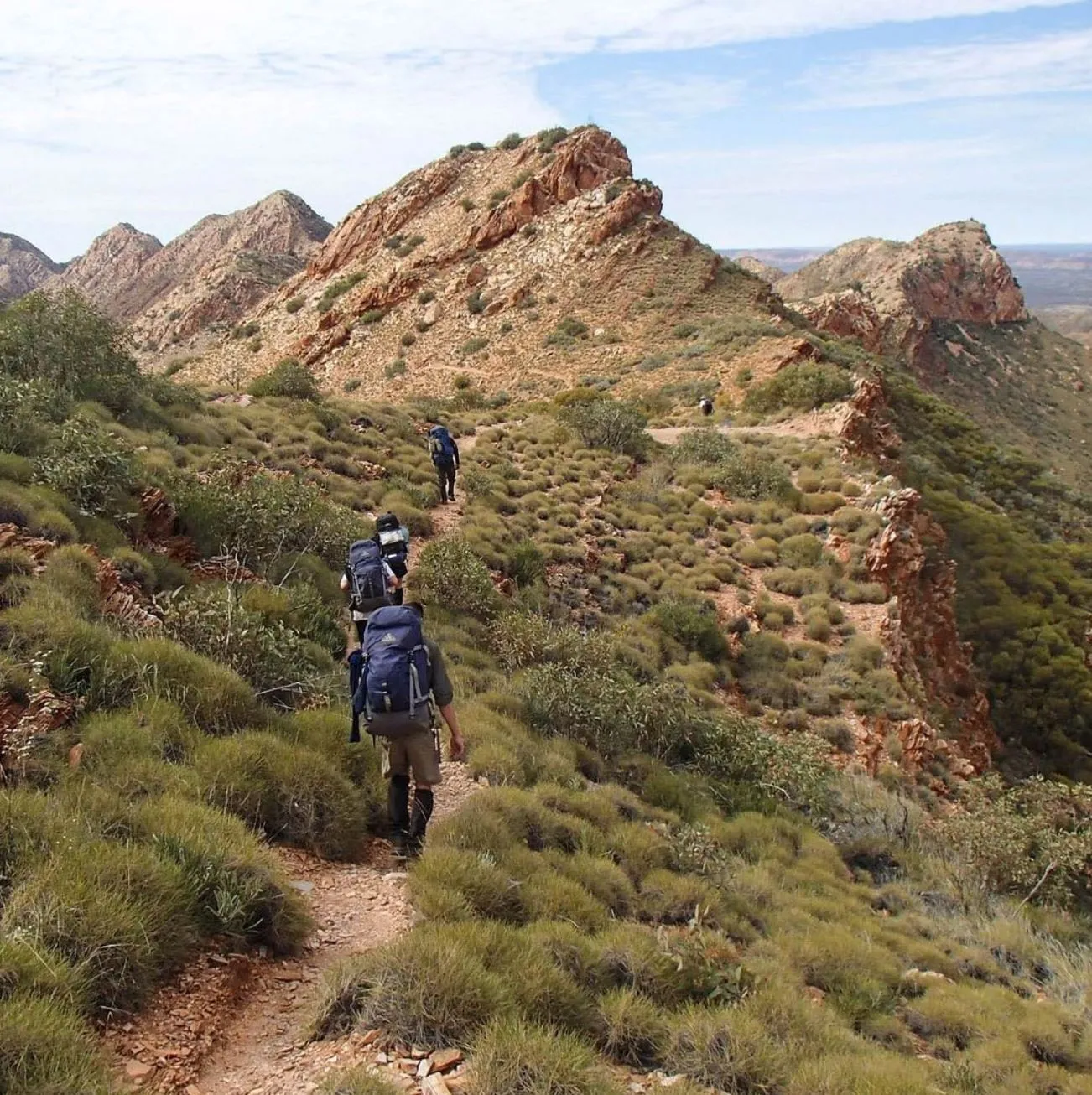
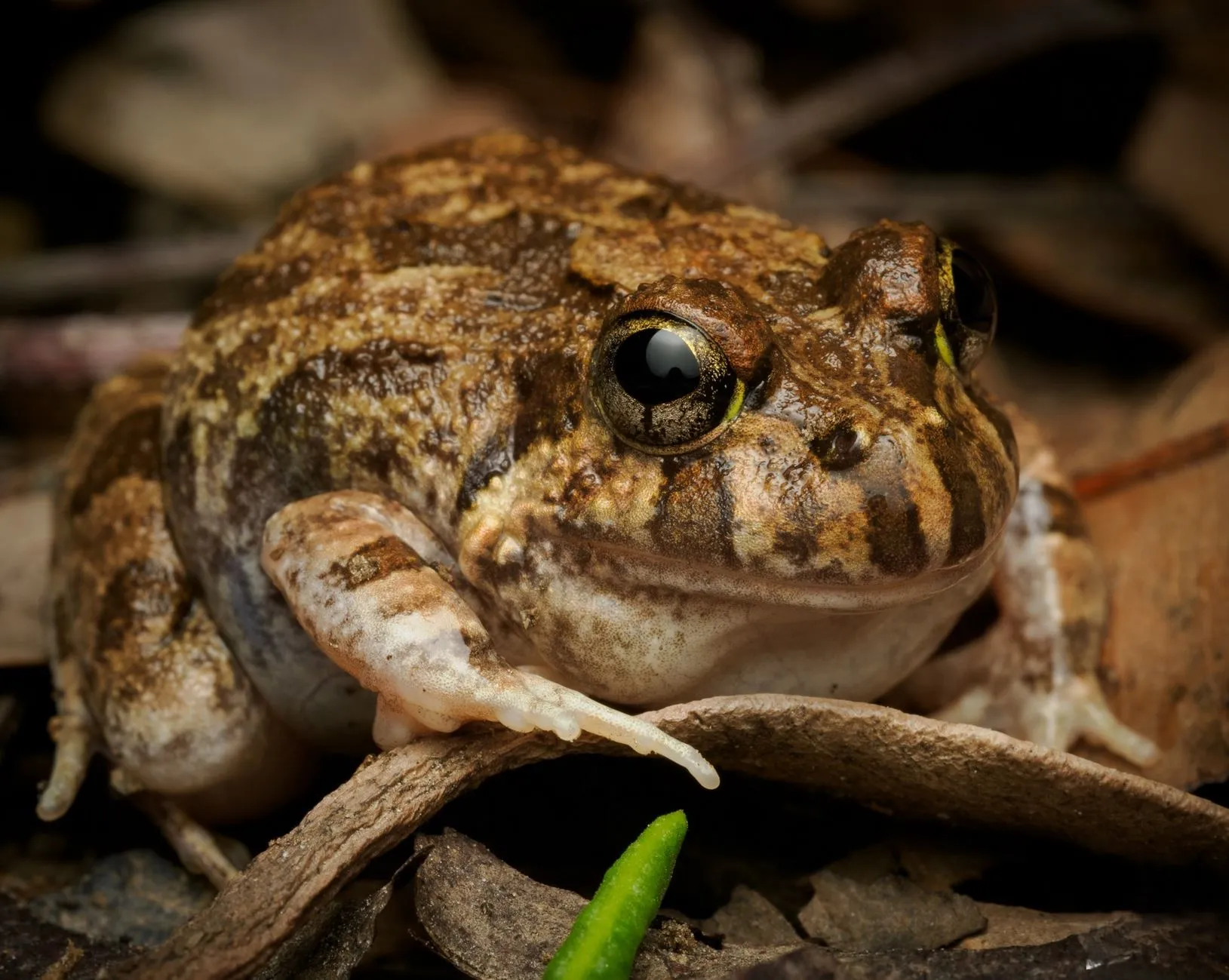
Spencer’s Burrowing Frog
Spencer’s Burrowing Frog (Platyplectrum spenceri) is a desert survivor. Unlike many amphibians which need constant water, this little frog spends most of its life underground, burrowing deep into the soil to escape the heat. After rain, it emerges to breed, taking advantage of the temporary pools that form in the landscape. Its chunky body, strong legs and camouflaged skin make it hard to spot, but if you’re hiking after a rare downpour you might be lucky enough to see one.
Black-flanked Rock Wallaby
One of the most agile and elusive inhabitants of the Larapinta Trail is the Black-flanked Rock Wallaby (Petrogale lateralis). These small marsupials are expert climbers, using their powerful hind legs and long tails to scamper up steep rocky cliffs with ease. Their soft, grey-brown fur helps them blend in with the rocky terrain, making them hard to detect. Early morning and late afternoon are the best times to spot them as they venture out from their rocky shelters to forage for food. Some of the best places to see them are Euro Ridge, Wallaby Gap and Hugh Gorge.
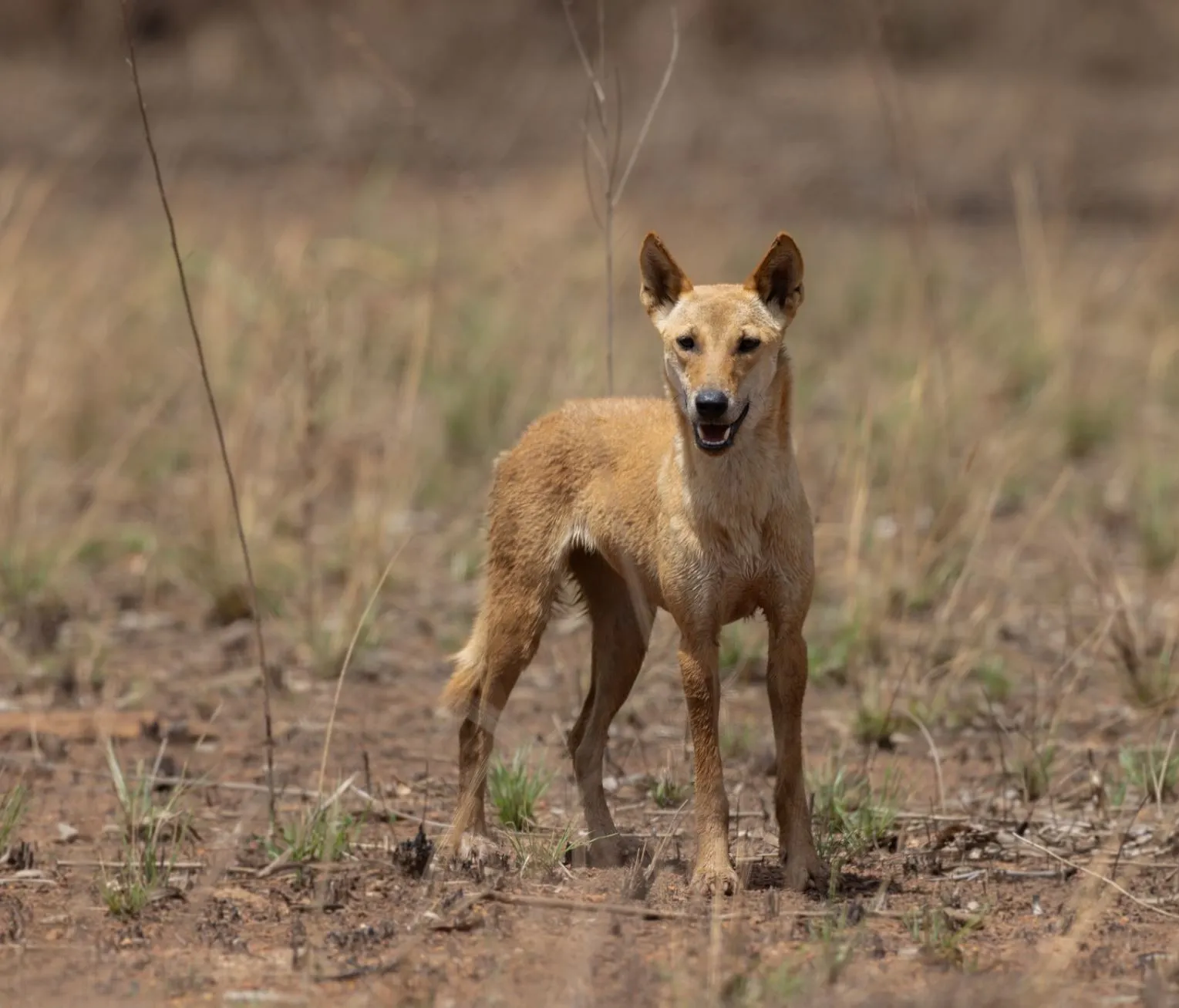
Dingo
As one of Australia’s most iconic wild canines, the Dingo (Canis lupus dingo) is a vital part of the Outback environment. With its sandy-coated body and lean, muscular build the dingo is well adapted to the desert. Dingoes are usually solitary but can be seen in small packs hunting or scavenging along the trail. They generally avoid humans but if you’re hiking you might hear their haunting howls at night, a true testament to the wildness of the Larapinta.
Perentie
The Perentie (Varanus giganteus) is Australia’s largest monitor lizard and a real predator of the Outback. Up to 2.5m long, this is a big lizard and a treat to see if you’re lucky enough to spot one basking in the sun. Perenties are intelligent and efficient hunters, eating birds, insects and even smaller reptiles. Their yellow and black spots and cautious but curious nature make them one of the most interesting animals on the trail. The rocky underfoot conditions of the Larapinta Trail, especially in areas like Counts Point and Inarlanga Pass, are perfect for these lizards.
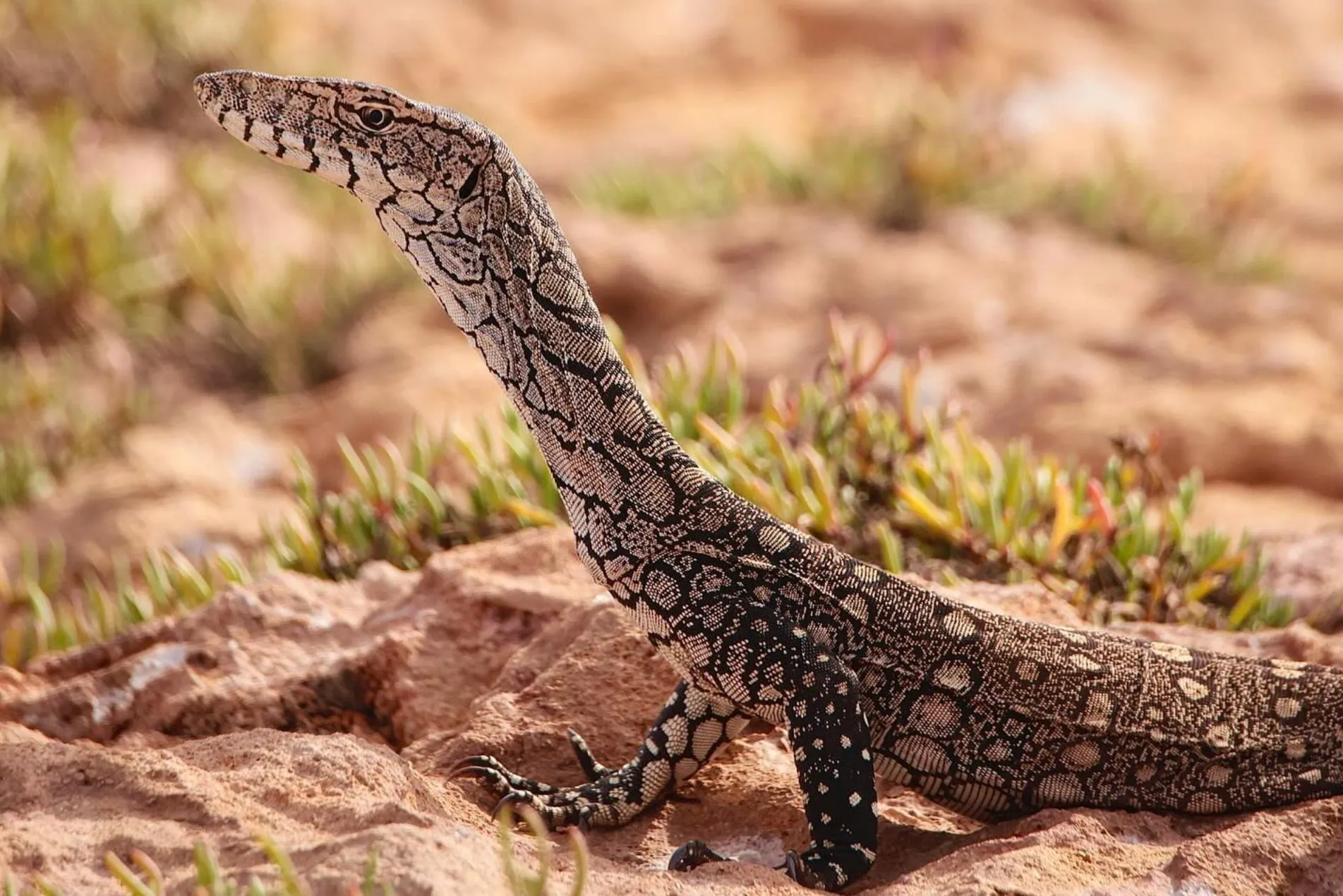
Brumby
Brumbies, wild horses also known as feral horses, run free along parts of the Larapinta Trail. These descendants of domesticated horses have adapted to the harsh landscape and can survive on very little water and sparse vegetation. While their presence in the Australian outback is often debated due to environmental impact, there is no denying their beauty and tenacity. Seeing a mob of Brumbies galloping across the red earth against a range is an experience you’ll never forget.
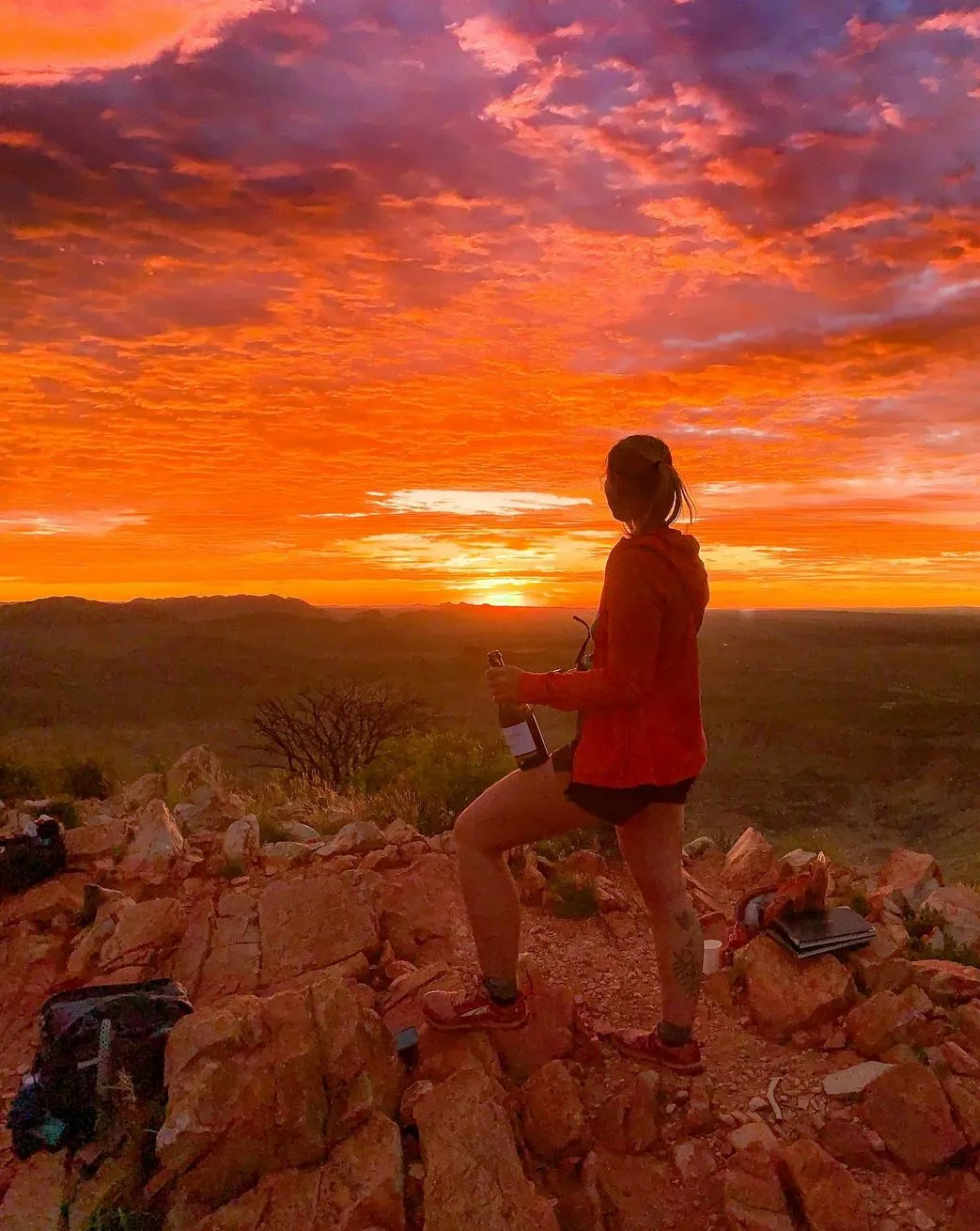
Best Time for Wildlife
Wildlife along the Larapinta Trail varies with the seasons and time of day. The cooler months of April to September are best for hiking and wildlife spotting as animals are more active and daytime temperatures are more comfortable. Early morning and late afternoon are the best times for mammals and birds as they avoid the heat of the day. Nocturnal creatures like dingoes and some reptiles are more active at night so evening hikes are a great time to have a unique encounter. Hikers should also consider the terrain as steep ascents and varied terrain require a good level of fitness and cardio to fully enjoy the experience.
Camping and Travel
The Larapinta Trail Walk offers different camping experiences, from permanent campsites with communal areas and dining tables to more rough terrain for solo hikers. Travel arrangements, including travel insurance and personal cancellation insurance, should be arranged ahead of time, especially if booking a single tent or private tent. Hikers should also factor in camping fees and the cost of camping gear, including stretcher beds, foam mattresses and hot drinks for a comfortable night. The Alice Springs Telegraph Station and Alice Springs Desert Park are great places to learn about the region’s history before you start your walk.
The Larapinta Trail is not just a journey through beautiful country but also an opportunity to see some of Australia’s most amazing wildlife. With patience, respect and a keen eye you can have unforgettable encounters with the incredible creatures that call this land home.
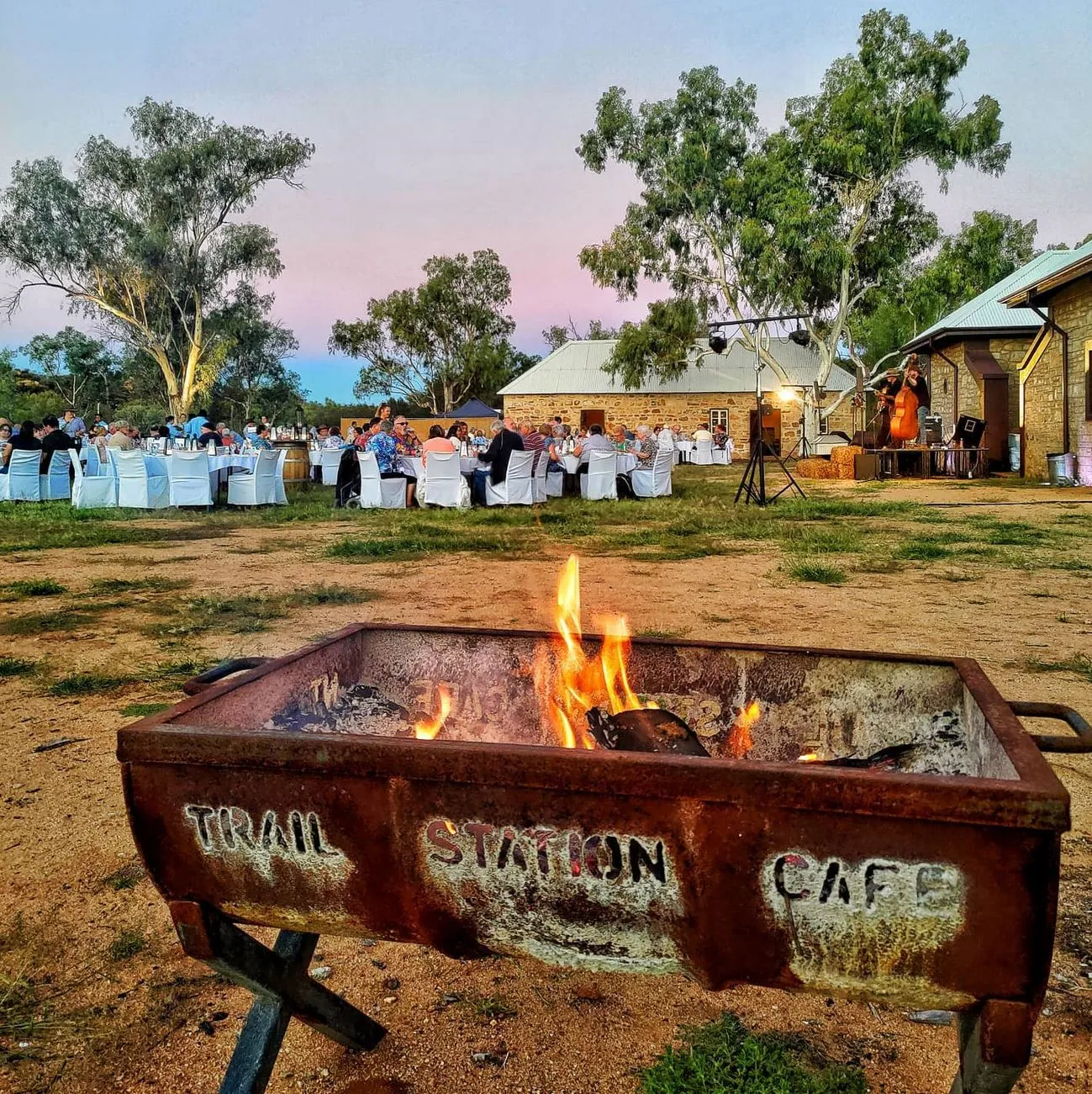
FAQ
Are there any dangerous animals on the Larapinta Trail?
Most wildlife along the trail is harmless if left alone. But be careful of venomous snakes and large monitor lizards. Always observe from a distance, especially when walking on quartzite ridges and in dry creek beds.
Can I feed the wildlife?
No, feeding wildlife is not recommended as it disrupts their natural behaviour and can make them reliant on human food which is not good for them. This also applies to Black-footed Rock Wallabies that are often seen at Glen Helen and Jay Creek.
How likely am I to see a dingo?
Dingoes are along the trail but are generally wary of humans. You may hear them at night or see one from a distance, especially in areas like Waterfall Gorge and the Finke River region.
What do I do if I see a Brumby?
Brumbies are generally not aggressive but should be treated as wild animals. Keep a safe distance and don’t try to approach or feed them. Some of the best places to see them are Haasts Bluff and Brinkley Bluff.
Are there guided wildlife tours on the Larapinta Trail?
Yes, there are guided hikes that offer expert knowledge on local wildlife, flora and geology and enhance the trail experience. These tours often include safari-style tents, camping gear and experienced guides who can provide trail health and walking country preparation.
